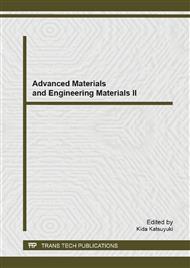p.226
p.230
p.234
p.238
p.242
p.246
p.250
p.254
p.258
Analysis of the Effect of Temperature on Thermal Conductivity of the Insulation Block Made from Secondary Raw Materials
Abstract:
The increasing requirements for thermal protection of buildings results in promotion of the development of structural and material design of building facilities. Proper structural design of details then leads to elimination of thermal bridges and to improvement of the indoor environment. Waste management is one of the main features of sustainable construction. The solution of this problem is to extend the product life cycle by recycling. The contribution discusses the development of thermal insulating material block made of secondary raw materials - a thermal insulation composite material - TICM [1]. Uniform dispersion of grains of foamy glass waste (filler) in polymer filling from recycled thermoplastics (PP, HDPE) induces formation of particle composite. Decisive properties in choosing the materials to be applied include mainly the coefficient of thermal conductivity, volume density, compressive strength and water absorption. The coefficient of thermal conductivity λ [W/mK], however, varies depending on surrounding temperature and humidity.
Info:
Periodical:
Pages:
242-245
Citation:
Online since:
April 2013
Price:
Сopyright:
© 2013 Trans Tech Publications Ltd. All Rights Reserved
Share:
Citation:


